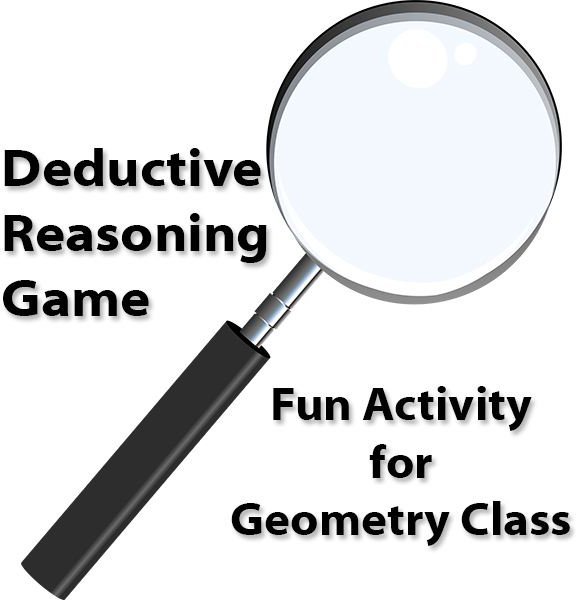Geometry Practice: A Fun Activity Using Deductive Reasoning
Geometry Proofs? We Hate Proofs!
Most experienced teachers know that some of the most successful classroom activities stem from spur of the moment ideas. Desperate to spark some interest or liven up a boring topic, we reach down deep to find something—anything—that will draw our students back in and get them thinking. That’s how I happened to develop this little activity to give students some fun geometry practice using deductive reasoning.
This activity can be used any time after lessons on deductive reasoning have been completed.I first used it one day when students were so bogged down with doing tedious proofs and asking the inevitable “When are we ever gonna use this stuff anyway” questions. I was desperate to get them to understand how thinking and reasoning is important in everything that we do.
Try Something New…
I had the students stop working and put away all books and materials except for a blank sheet of paper and a pencil. I told them we were going to play a game to relieve the stress of the day’s work. I then passed out a small blank slip of paper to each student and instructed them to write one fact about themselves that they thought no one else in the class knew, but not to put their name on the paper. Their curiosity was immediate and they were anxious to see how this ‘game’ played out.
I collected the slips of paper from the students. I announced that I was going to read each item aloud and the students were to record the facts on a piece of paper as I read them.
Playing the Game
As I read the items, it was fun to see the students’ reactions. I could see them thinking about just who they thought had really once dyed their hair purple or who had never eaten watermelon!
After all the students’ facts were read and recorded, I explained the simple rules of the game. Each student would be given an opportunity to ask any other student a question that could be answered yes or no. Students were to answer questions truthfully. All students would make a note of the answers on their facts sheet.
The objective of the game was to match each fact with the correct student, or as the kids said, figure out who did what. For example, if a student asked Mary if she had ever eaten watermelon and Mary replied yes, the students reasoned that Mary was not the student who had written about never eating watermelon.
After the students had asked questions for a while, they were able to figure out at least some of the matches. I then asked them to stop for a moment and think about the process that they were using to figure out who did what. Imagine their surprise when they realized they had actually been using deductive reasoning as they played this fun game!
As the students learned fun facts about their fellow classmates, they also sorted facts, eliminated possibilities, and drew logical conclusions. I seized this opportunity to explain how doing tedious geometry proofs is merely an avenue for developing and extending deductive reasoning skills that are useful in everyday life.
A note of warning if you decide to try this activity—as the school year progresses, expect to bombarded with requests from students to “play that deductive reasoning game again!”
